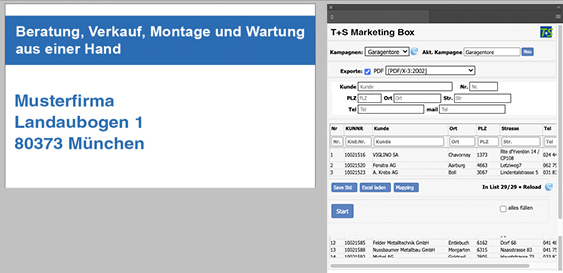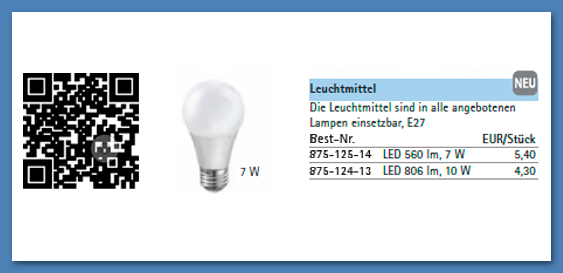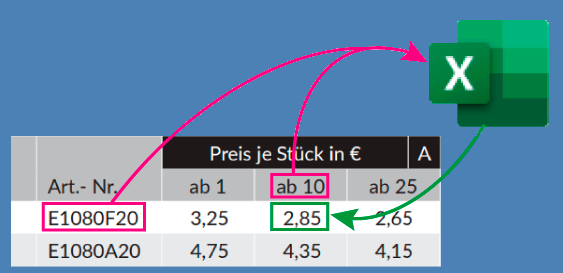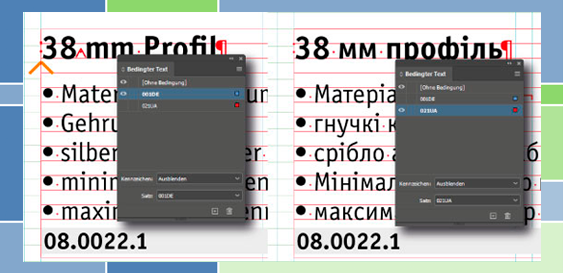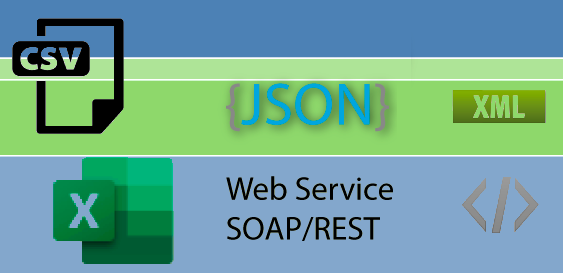New Video! Update Prices in InDesign Catalogs Quickly with InDesign Scripting!
New Video! Update Prices in InDesign Catalogs Quickly with InDesign Scripting! Read More »
Do you subject your customers to ancient price catalogs and lengthy price lists just because manually updating prices in catalogs and on lists takes way too much time and effort? We have the solution for you.
Please turn on the subtitles (CC) for the English translation.
For more information, please read our blog post on updating prices automatically using InDesign scripting to create catalogs in InDesign.
Update prices using a custom InDesign script from T+S. Discuss your needs with our experts.
New Video! Update Prices in InDesign Catalogs Quickly with InDesign Scripting! Read More »
Manufacturers selling through large distributor networks may wish to provide their resellers and dealers highly personalized B2B sales collateral and digital assets. Customized materials help distributors drive sales of products and close deals.
Centrally produced promotional materials such as invitations to house fairs, brochures, vouchers, product announcements, flyers, and media kits that are personalized with the respective dealer addresses and logos work to strengthen the effect of marketing communication while staying on brand.
The marketing departments and agencies tasked with producing this collateral face the challenge of inserting fully personalized company-approved content elements, or variable data, into Adobe InDesign master pages (templates) that conform to brand and CI (corporate identity) guidelines.
When creating these marketing documents with Adobe InDesign, graphic designers may quickly reach the limits of the data merge functionality within InDesign. Therefore, the Adobe InDesign scripting experts at T+S developed an InDesign plugin for variable data printing (VDP) that takes into account the special needs of marketing automation.
The plugin allows graphic designers to create multi-page InDesign templates and to connect placeholder fields (text, images, QR codes) with an imported data source (CSV file, PIM, DAM). Before the sales and marketing documents are generated, the correctness of the defined settings is checked with selected data sets. The plugin automatically creates the personalized documents in separate subdirectories for each record of the data source. All documents created in a data set (PDF files, JPG files, InDesign document) can be zipped by the plugin into one file, the promotional kit. Then only one file needs to be sent to each distributor or made available for download.
If needed, the variable data printing plugin (InDesign extension) can be customized to special requirements. That can involve a direct connection to your ERP system to fully automatic production of sales and marketing documents using InDesign Server.
Find out more about what InDesign scripting from T+S can do for you from our experts.
Compared to tablets running a catalog app, print catalogs offer several advantages: They don’t require electricity, are always “activated”, and don’t require a WiFi or Internet connection. However, to order from the catalog, your customer must use a telephone or web shop (media break). The item in the catalog first has to be searched for and found in the online shop before it can be ordered.
Why not seamlessly combine offline with online? A Quick Response (QR) code makes it easy. A QR code is a small two-dimensional pixel pattern that contains a coded link (URL) to a website. The QR codes are inserted in the print catalog next to the respective items. QR readers on a smartphone or tablet allow your customer to jump directly from viewing a page in a print catalog to viewing that item in your online store.
But how can graphic designers place hundreds or even thousands of QR codes in a print catalog? InDesign scripting can do! T+S can develop a customized InDesign plugin for your exact requirements. The script reads the article numbers in your catalog, creates the corresponding QR codes, and places the codes as graphics (images) at the designated spaces on the pages of the catalog – automatically! QR code by QR code. Page by page!
Each QR code matches to the correct corresponding article and links to the correct corresponding URL. InDesign scripting from T+S gets the job done for you — without errors and reliably.
Get information from our experts about InDesign scripting from T+S.
Surely you know this situation: The new manually created catalog is ready, just add a few last-minute changes, and then the catalog is ready to be published. Finished once again! And next time? Then you probably have to copy and paste every single price – article number after article number – from a Microsoft Excel table into the Adobe InDesign document. When thousands of prices have to be updated, this activity takes a very long time and in addition, errors tend to creep in.
Do you subject your customers to ancient price catalogs and lengthy price lists just because manually updating prices in catalogs and on lists takes way too much time and effort?
InDesign scripts from T+S for updating prices first analyze the manually created price catalogs by detecting the article numbers and corresponding prices. Then the scripts look in the available Excel files for the article numbers found, select the prices, and replace the old prices in the InDesign document with new prices.
Each manually created price catalog is a little different from the next. Sometimes article numbers are separated from prices through a tab in a paragraph structure. In other catalogs, article numbers and prices are arranged in a table. In a cross-classified table, the price results from a combination of entries in the table header and the table cell. Custom-built InDesign scripts from T+S take these differences into account. The experts at T+S create an optimum solution in each case.
T+S also offers solutions for cases in which the article number does not even appear in the InDesign document. With a special InDesign plug-in, you tag the relevant prices invisibly with article numbers. The effort taken to do this once definitely pays off during the next round of price updates.
Custom InDesign scripts from T+S update prices in minutes instead of days or even weeks. All replaced prices receive a special mark in the InDesign document so that you can see (visually recognize) which prices have been updated. If a price is not marked during an updating run, it means that the article number in the document was not found in the Excel file. That could be because the article number is incorrect, or because the correct article number is not contained in the Excel table. The visual check gives you the certainty of knowing that all prices have been updated. Some of our customers have found errors in their price catalog this way – errors that had gone unnoticed for years.
With InDesign scripts specially adapted to your needs, you can react swiftly and flexibly to price adjustments and last-minute price changes. At the push of a button – within a few minutes – the current prices are applied, error-free, every time. 100% automatically.
Please have a look at our new video about how to update prices in InDesign catalogs quickly with InDesign scripting. Also have a look at a more comprehensive view of updating prices with InDesign.
Update prices using a custom InDesign script from T+S. Discuss your needs with our experts.
Update Prices – 100% Automatically! Read More »
We at T+S apply the “conditional text” function in conjunction with InDesign scripting to manage various versions of a single document more easily. What is conditional text, and how can it be applied to simplify working with documents containing multiple prices or languages? In this blog post, we explain what conditional text does and give two examples of how using conditional text can simplify working with multiple versions of one layout.
Conditional text is a standard function in Adobe InDesign. It can be found in the Window menu > Type & Tables > Conditional Text. By using conditional text, a graphic designer can assign specific text to a category (condition) defined and given a name by the designer. For instance, in a price list, a given price (which appears as text in a document) can be categorized as “Euro price” or “American dollar price.” Once the relevant text is marked and assigned to the proper category, the text can be displayed or hidden by clicking to apply the condition. InDesign automatically hides the non-relevant text when the condition is applied.
Applying conditional text allows a designer to better manage changes to text in a single document, greatly simplifying workflows in the process. The alternative would be to create separate individual documents; say, one price list document containing only prices in Euros and another, separate price list containing only prices in American dollars. The advantage of using only one price list with conditional text is that when it comes time to update all prices, in the document with conditional text, there is only one document to manage. Changes are made only to one document. There is no need to save, locate, or update a second document.
When price lists come in not just two versions, but ten or more, updating prices is immensely simplified and faster when conditional text is used.
Our second example concerns a catalog to be produced in five languages. One document containing text in all five languages is created and managed. All English-language text in the catalog is assigned to the category (condition) “English,” the Spanish text is assigned to the category “Spanish,” the French text is assigned to “French,” and so on for the other two languages. When the Spanish-language catalog is to be output to a PDF file, the condition “Spanish” is applied. Immediately, the text of the other four languages is hidden and only the text marked “Spanish” can be seen. The Spanish catalog is then generated. The four remaining catalogs can be generated similarly by applying the respective condition in turn. Thus, one document is managed, but five versions of the catalog can be outputted.
Conditions can even be defined and then combined in sets. It is thus possible to create various versions of a catalog that match multiple conditions; for example, “price is in British pounds and language is GB-English,” “price is in American dollars and language is US-English,” and “price is in Euros and language is GB-English.”
In summary, using conditional text improves productivity by eliminating time spend updating multiple versions of a document when managing one would be simpler. It also obviates the need for dealing with layers.
Discover a world of document production possibilities with InDesign scripting from T+S. Discuss your needs with our experts.
We at T+S are often asked by our customers which data sources can be attached to InDesign scripting extensions or plugins.
One can distinguish between online data sources and offline data sources. An online data source is a live access of a database or product information management (PIM) database. On the other hand, an offline data source is always a file created by a data system and processed within InDesign at a later time. Both online and offline data sources have advantages and disadvantages that depend on how they are used.
InDesign extensions (also called plugins) can work with the following offline data sources:
Offline data sources that InDesign can work with include:
Excel files can be read directly by an InDesign plugin. We at T+S do not recommend this approach, however, because Excel files can contain quite a few “pitfalls” such as faded out columns, formatted cells, or applied filter conditions. These modifications have to be taken into account during an import, making the development of the import routine time-consuming before one even comes to the actual task at hand — automation.
It is more elegant to insert the content of an Excel file using the clipboard with copy and paste in a text field within a plugin developed by T+S. The method of using the clipboard removes all formatting, making the import routine quick and manageable. This approach always yields a text file separated by tabs.
CSV files are flat text files that in the first row contain a header definition of the data fields and starting in the second row contain the actual data. Data fields of a data set are normally separated by a comma, semicolon, or tab. When the field separator character also can be found within the relevant data to be used, the affected fields have to be escaped by quotation marks (quotes).
XML files are an elegant and efficient way of obtaining data with multiple-level hierarchies (1:n relationships) from a source. Using an InDesign plugin to work with XML files that are several hundred megabytes large can be done easily. However, some time may be needed between generating the XML files and reading them in.
JSON files are used primarily to exchange data with web services. They are, just like XML files, an elegant and efficient way to transfer structured hierarchical data from a database system to a plugin.
A web service is a service that makes available data through the http or https protocols. This service normally receives its data from a database or a product information management (PIM) system.
The advantage of having an InDesign plugin receive its data from a web service is the currency of the data, because the access takes place online. In the case of CSV, XML, or JSON files, there is always a bit of a span of time between when the files are created and when the files are read into the plugin.
Connecting InDesign Plugins to a database using ODBC is only possible with third party plugins. So we do not recommend this possibility.
For Microsoft SQL Server and MySQL, we have successfully used JavaScript libraries to directly access databases. The advantage is the same as with a web service in that the data is current because the access takes place online.
However, every time the database is updated, there is the question beforehand of whether afterwards the plugin will access the data tables successfully. It is therefore necessary to very carefully evaluate the advantages and disadvantages of this method.
Discover a world of document production possibilities with InDesign scripting from T+S. Discuss your needs with our experts.
Data Sources for InDesign Scripting Workflows Read More »

